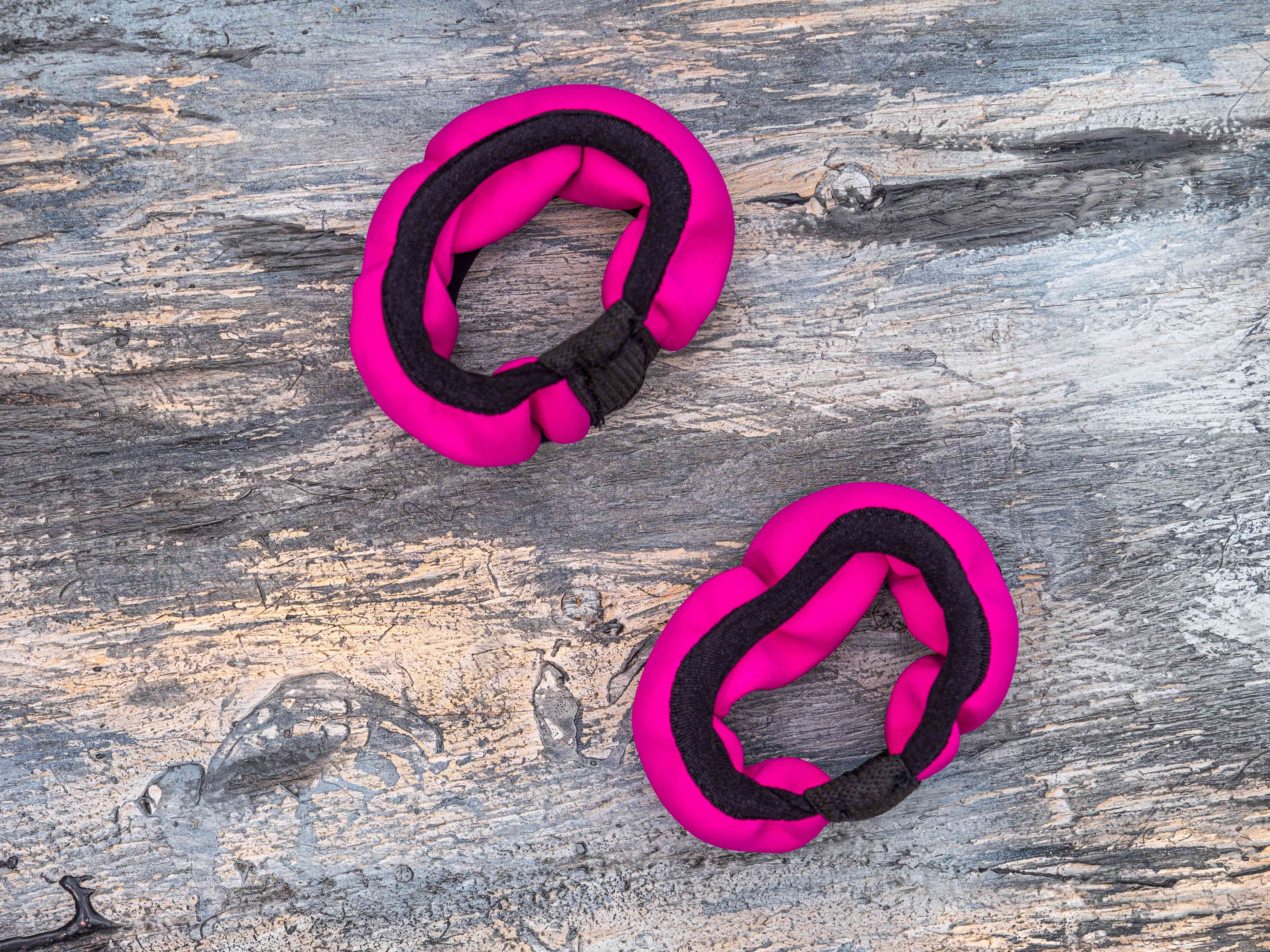Wrist Weights Are Trendy Again—But Can They Really Tone Your Arms?

Wrist weights have become popular again on social media, where users say wearing the weighted wrist cuffs while walking or doing household chores can help tone your arms
- Wrist weights have become popular again on social media.
- TikTok users say wearing the weighted wrist cuffs while walking or doing household chores can help tone your arms.
- Though adding wrist weights to your exercise routine can level-up your workouts, social media may be overstating the benefits.
An old fitness trend has become new again on social media: wearable wrist weights.
The weighted cuffs or bangles—made popular again by brands like Bala—have seen a resurgence on TikTok, with users claiming that wearing them while walking or doing household chores can help tone their arms.
"You don't need pilates for nice, toned arm muscles," TikTok user Kate Davidson said in her now-viral video, "you can just get little bangles and go for walks."
But can these wrist weights really offer any health benefits? Experts say yes—but not exactly in the way many TikTok users claim. Here's what you need to know before hopping on the wearable weights trend.

Eleonor2439 / Getty Images
Wearable Weights 101
Put simply, wearable weights are typically one- to three-pound cuffs that you can wear around your wrists or your ankles. These weights can be worn while doing everyday things like walking or household chores, or they can be used in lieu of handheld weights like lighter dumbbells
Bala Bangles specifically—arguably the most popular type of wearable weight on social media—are made from stainless steel and wrapped in silicone for comfort against the skin.
"Because they are so flexible, [the wearable weights] wrap around your wrist like a bracelet and are adjustable in circumference as well as resistance preference,"
Susane Pata, CPT, a trainer with the National Academy of Sports Medicine and a master trainer for TRX and Life Fitness, told Health.
Besides Bala, these wrist weights can be found at nearly any fitness store or on Amazon by various brands—some also use a moisture-wicking fabric to help you stay cooler during workouts.
Can Wearable Weights Really Help You 'Tone' Your Arms?
Wrist weights can add extra resistance to your arm movements, offering your body more of a challenge than if you were to do bodyweight exercises alone.
"Because they are worn around the wrists, the [cuffs] can challenge the muscles in your arms and shoulders, but only to a certain extent," said Pata. "To increase strength gains, [you] would need to lift heavier once it's appropriate to do so—most often using dumbbells."
But there's an unfortunate truth about "toning" your muscles: You can't.
Your muscles—the soft tissue in your body responsible for movement—can only really only grow or shrink. Toning, in that case, is a misnomer, and refers more to muscle building paired with fat loss, which can then make muscles appear more prominent.
How Can Wearable Weights Improve Your Health?
Consistently using weighted cuffs likely won't help you build large muscles, but they can help improve your cardiovascular health and muscular endurance.
By adding resistance to your workouts, you can increase the load on your heart and muscles—ultimately training them to perform more optimally and for longer periods of time.
Additionally, the added weight may also help increase calories burned during exercise and everyday activities.
"Using the bangles adds a bit more resistance to whatever movement you're doing," Emily Claman, a certified prenatal and postnatal fitness specialist and founder and CEO of Push, told Health. “Forcing the muscles to work a bit harder which can elevate the heart rate to help increase calorie burn and muscle activation and stimulation.”
The weighted cuffs may also be a helpful option for people who can't grip typical dumbbells or other weights.
“Bala Bangles are a terrific option to begin with for people who have trouble gripping free weights,” said Pata. “Later, as training progresses, I’d invite these same clients to work on grip strength as it is a very important component of strength training and longevity.”
Using Wearable Weights Safely During Workouts
Weighted cuffs may not be suitable for everyone, particularly those who have pre-existing arm or shoulder injuries or conditions. Anyone interested in trying wearable weights should first get clearance from a healthcare provider.
According to Pata, wearable weights should be adjusted properly so they're sitting comfortably on wrists (or ankles, if using them on legs). The cuffs are also best suited for low-impact activities like walking, yoga, and Pilates.
“Wearing them during fast-paced cardio workouts can potentially strain shoulder and arm joints,” said Pata.
“In some cases, the increased resistance to the arms may make it difficult to perform certain upper body exercises or movements with proper form," added Pata, "which ultimately leads to inefficient muscle activation, compensations, or worse yet, injuries.”
Overall, Pata recommended anyone interested in using wearable weights to always start with a low weight and gradually increase it over time, and to avoid any exercise that moves too quickly or forcefully.
This story originally appeared on: Health News - Author:Amber Sayer


















